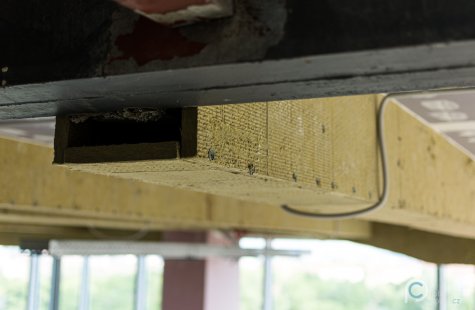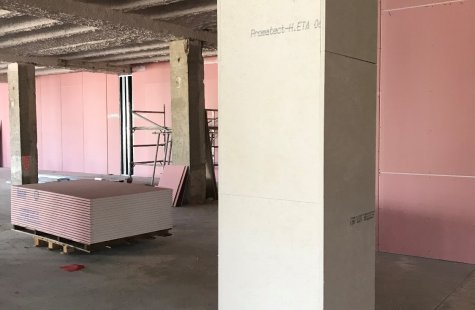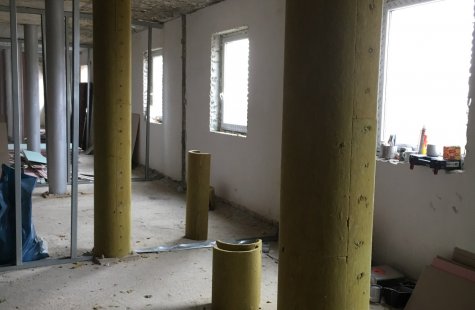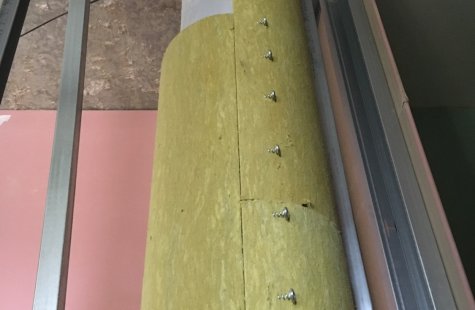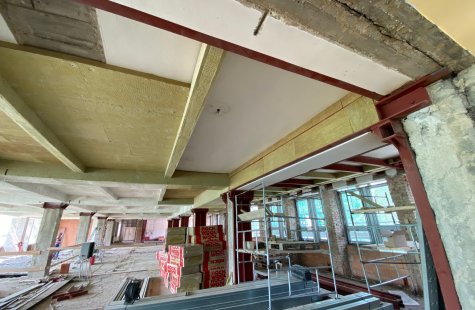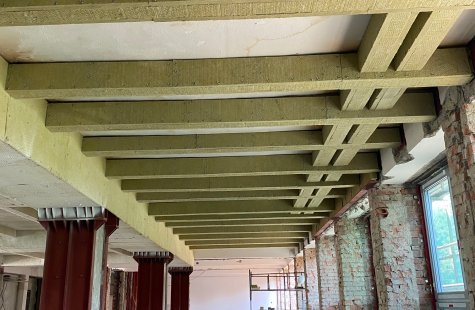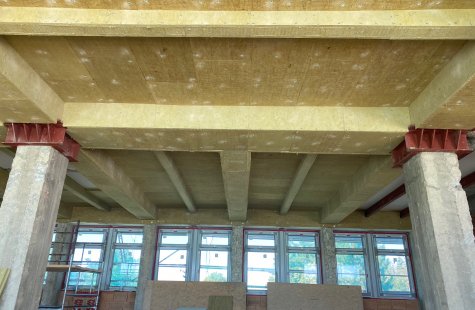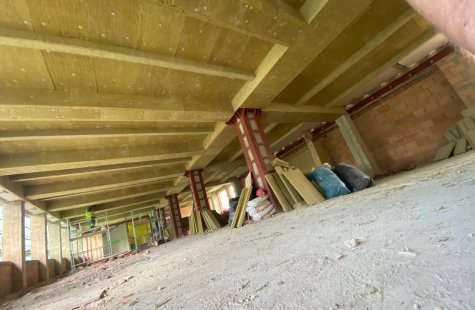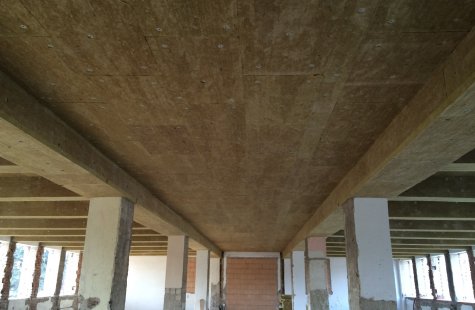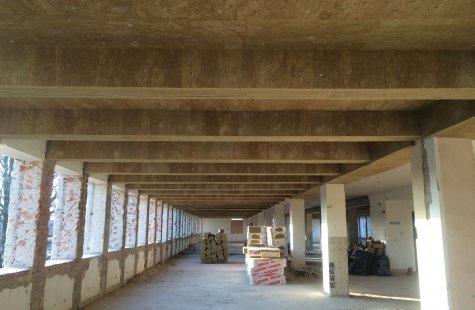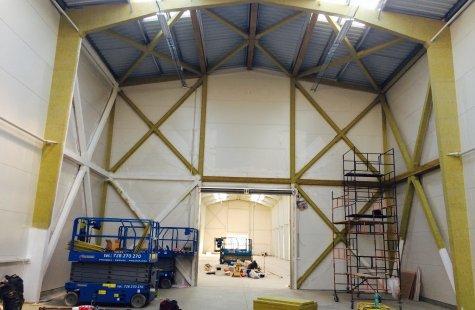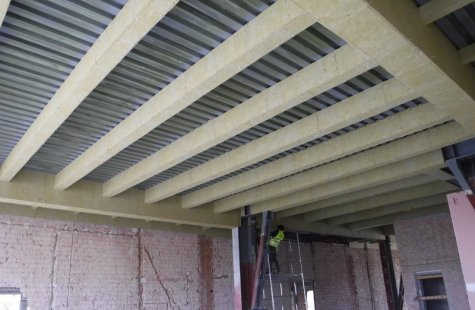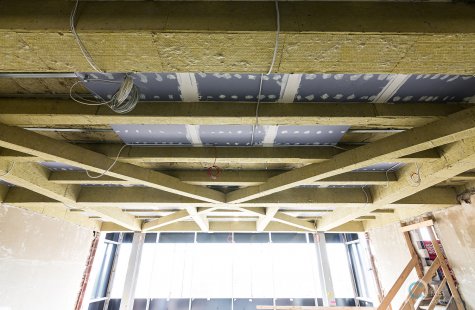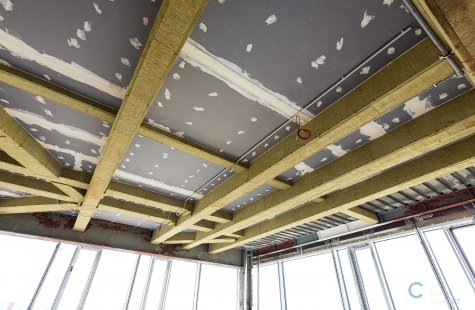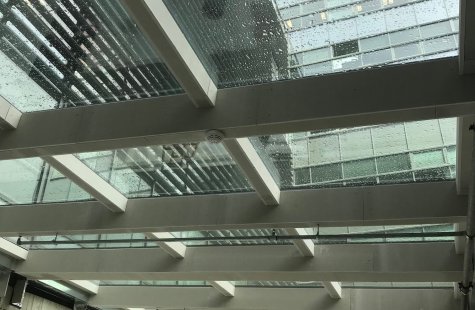If the fire resistance of the structures is lower than the value required by the project, then it is necessary toadditionally treat these elements with a suitable materialto increase their fire resistance. Fire-resistant cladding can be used not only for load-bearing building elements (steel, concrete, wood), but also for ventilation, heat and smoke extraction, cable trays, etc.
Fire protection claddingis intended to ensure that the critical temperature of the structure is reached only after a sufficient amount of time has elapsed to minimize damage. That is, in order to allow sufficient time forpeople to escapefrom danger or tosalvagenecessary property. The cladding material used is dependent on the required fire resistance value.
A fire-resistant cladding of a calculated thickness is formed around the element which, in the event of a fire, will fireproof the structure for the required period of time to prevent, for example, the steel reaching a critical temperature and the structure collapsing. The fire-resistant cladding may follow the shape of the structure or a 'box' may be formed around the structure.
In this way,the fire resistance of the elements can be extendedby up to 120 minutes. In the case of concrete (reinforced concrete) structures, evenby up to 240 minutes for the lifetime of the structure.
Fire-resistant tiles can be used to increase fire resistance of:
- steel structures,
- structures made of concrete,
- structures made of concrete cast into trapezoidal sheets,
- trapezoidal sheet roof structures,
- structures made of wood,
- bonded carbon slats,
- air ducts.
Fire protection cladding used by Unifast spol. s.r.o.:
1. Isover FireProtect
The system, made of mineral boards, can be used mainly for fire protection of steel structures and structures made of trapezoidal sheets serving as lost concrete formwork and roof structures made of trapezoidal sheets insulated with mineral felt or polystyrene on the exterior side. FireProtect boards are made of 20-100 mm thick stone wool, which are connected with galvanized steel screws. FireProtect is self-supporting and achieves fire resistance of up to 180 min. (depending on the element), it is thermally and acoustically insulating (no thermal bridges or losses), and it can form any shape and surface structure (the cladding can be painted with an internal coating, plastered, or combined with ceramic cladding).
2. Rockwool Betarock
This panel system can be used primarily for fireproofing concrete and reinforced concrete. The Betarock system boards are made of stone wool in a uniform thickness of 60 mm, which is directly anchored to the structure with steel plate dowels. The Betarock system achieves a fire resistance of up to 240 min. (depending on the composition of the structure). Thermally and acoustically insulating (minimal heat loss and bridging). The final structure can be created with paint, ceramic tiles, plaster etc.
3. Knauf Fireboard
This plaster fibreboard system can be used primarily for fireproofing concrete, steel, concrete cast into trapezoidal sheets and bonded carbon slats. The upside of these boards over plasterboard is that they can be installed directly, i.e., without a substructure, using clips or screws.
The Knauf Fireboard system achieves a fire resistance of up to 240 min.
4. Promat Promatect
This calcium-silicate board system can be used primarily for fireproofing concrete, steel, trapezoidal sheets and bonded carbon slats. To create fire protection air and cable routes. Promatect system boards are available in many designs and, thanks to their compatibility and minimal thickness, have the advantage over plasterboard of being able to be installed directly, i.e., without substructures, using clips or screws.
The Promat Promatect system achieves a fire resistance of up to 240 min.
5. Ordexal
Since 2022, Unifast spol. s.r.o. has obtained a license for Ordexal mineral fireproofing owned by J. Seidl a spol., s.r.o.
The Ordexal system generally consists of 20-80 mm thick stone wool boards, refractory adhesive and metal clips or stirrups. The Ordexal system achieves a fire resistance of up to 180 min. (depending on the type of application) and can be used for:
- increasing the fire resistance of steel load-bearing structures,
- increasing the fire resistance of reinforced concrete structures,
- increasing the fire resistance of structures in combination with trapezoidal sheeting (lost formwork, roof structures),
- increasing the fire resistance of non-load-bearing perimeter walls made of trapezoidal and plain sheet metal,
- increasing the fire resistance of ceramic ceilings (e.g. HURDIS, MIAKO),
- increasing the fire resistance of partitions made of cavity bricks containing a maximum of 65 % cavities,
- increasing the fire resistance of sheet metal enclosures for electrical switchboards.
